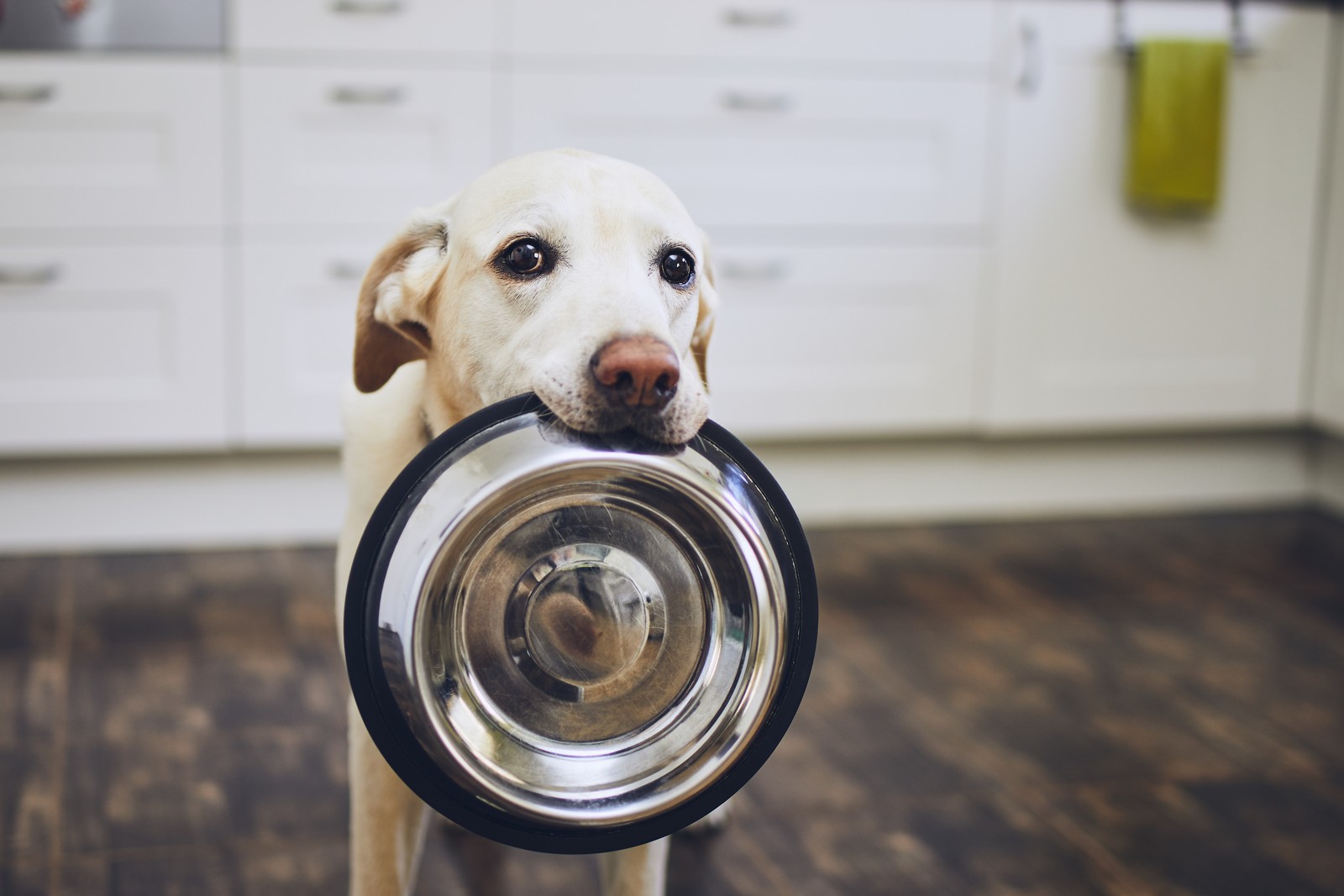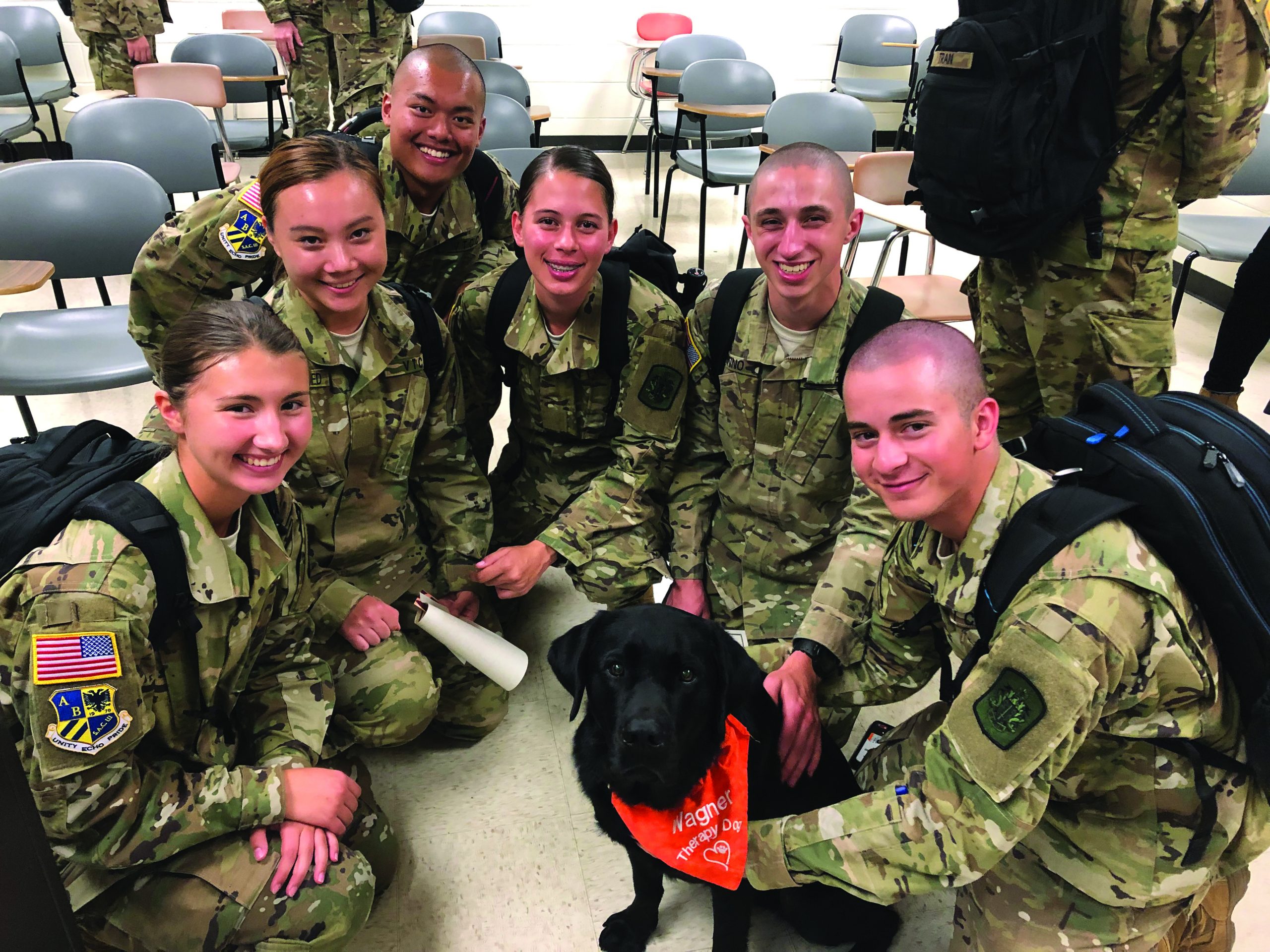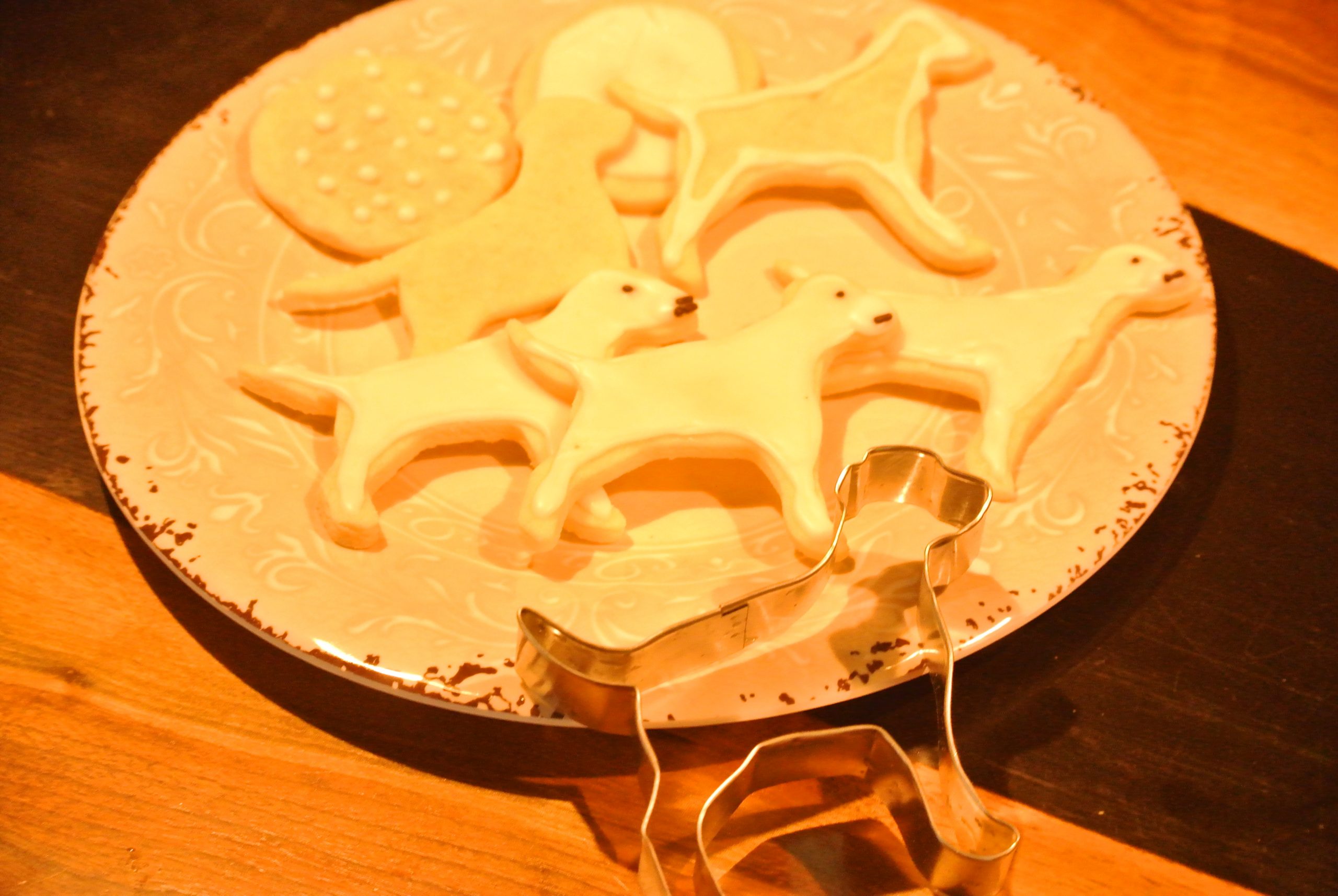by Hailey Hudson
Making a home-cooked meal for your Labrador can be a special time of bonding for you both. Before you start cooking, however, make sure that everything you’re feeding your Lab is safe for dogs to eat and will add some nutritional value to their diet. Here are the dos and don’ts of cooking for your Lab at home, with a few meal ideas to try.
Every dog is different, so before you start cooking, check with your vet to make sure it’s okay to feed your Labrador certain foods. Also, keep in mind this article only contains guidelines for making food as a once-in-a-while treat, not switching your dog to an entirely homemade diet.
Do
Do focus on protein. Protein is the main component of a dog’s diet, so it’s important to include protein in any meal you cook — and since most meats are okay for dogs to eat, it’s easy, too. Choose proteins such as chicken, liver, or turkey and cook the meat yourself. Processed lunch meat or deli meat has a very high sodium content in addition to nitrates and additives, so it’s not the best choice for your dog.
Do focus on vegetables. Many vegetables are safe for dogs to eat, and they have a lot of nutritional benefits. If your vet has recommended that your Lab should drop a few pounds, vegetables can be helpful in that regard as well.
Do keep serving sizes small. Certain foods might give your dog diarrhea, cause an allergic reaction, or have other adverse effects — but you may not realize it until your dog eats that food for the first time. Keep portion sizes small to test the waters, and to make sure your dog isn’t getting too much human food.
Don’t
Don’t use any butter, oil, or spices. Most spices are not safe for dogs to consume. Garlic, for example, can be toxic for some dogs, while onion powder can cause diarrhea and vomiting with anemia as a long-term effect. Even simple table salt is a no-go — salt can cause your dog to have increased thirst and urination, eventually causing dehydration. Nutmeg is another example of a dangerous spice; it can agitate a dog’s nervous system and upset the stomach, and might even lead to death. It’s best to stay away from the spice cabinet when you’re cooking for your Labrador.
Stay away from other add-ins like butter, too; butter doesn’t have many nutritional benefits and can cause gastrointestinal upset. Cooking spray can also be toxic to pets. It might be difficult to get the hang of cooking such basic food, but your Lab’s palate is not as refined as yours — so they won’t notice or care about the lack of seasoning.
Don’t make this an everyday occurrence. The majority of safe “people foods” that your dog can eat should be saved for a treat one to three times per week. Consider creating a new family tradition where you cook a meal for your dog every Sunday; that can help ensure your dog doesn’t come to rely too much on home-cooked human food.
Don’t feed your dog processed foods. Stay away from processed foods like potato chips. Instead, stick with whole foods — basic meat and vegetables. Your Lab doesn’t need the chemicals, artificial preservatives, additives, dyes, and other extra ingredients that are found in many processed food items.
Meals to Try
So what does an ideal meal look like for your dog? Here are a few safe and delicious suggestions.
Eggs and boiled potatoes. Scramble a couple of eggs (no oil, butter, or spices added) and mix them with boiled sweet potatoes. Eggs are safe for dogs as long as you don’t put them on the menu more than a few times a week; the amino acids and vitamins can make your dog’s bones strong and its coat healthy. Boiled sweet potato is an excellent source of vitamin A. Keep portions very small at first, though, as the high fiber content could upset your dog’s stomach. A tablespoon of potato is ideal.
Chicken and rice. Boil a skinless boneless chicken breast and shred the chicken. Cook some white rice in the leftover broth. After everything has cooled, serve your dog a small portion — two parts cooked rice to one part cooked chicken. This is a great dish to make if your vet suggests following a bland diet for a time to help with gastrointestinal upset.
Salmon and green beans. Purchase some fresh boneless salmon fillets and bake the salmon. Bake the green beans in the oven, too, and then break them into very small pieces; green beans are chock-full of vitamins, magnesium, and fiber.
Apples and cheese. Give your dog a few apple slices (remove the seeds, and cut off the skins to remove excess fiber) with some small chunks of cheddar cheese. Some dogs are lactose intolerant, so start with a very small amount of cheese; or, the lower lactose content in cottage cheese makes it a great alternative for Labs with finicky stomachs.
Bananas and peanut butter. Bananas have a high sugar content, but they’re okay for an occasional treat — and if you pair them with peanut butter, your Lab will love it! Serve banana slices with peanut butter smeared on top, or blend bananas and peanut butter and freeze the mixture to make an ice-cream-like treat.
Omelet. You have several options for ingredients here. First, add an egg; next choose another protein source, like salmon. Throw in a little cheese and then select a safe vegetable such as broccoli, kale, or zucchini. Then cook the omelet and serve it to your dog. As usual, just don’t add any extra oil, butter, or spices.
These are just a few examples of the ways you can combine safe foods to make a fun dish for your pet. Remember to consult with your vet first, serve your dog small portion sizes, and save these meals for a once-in-a-while treat.







